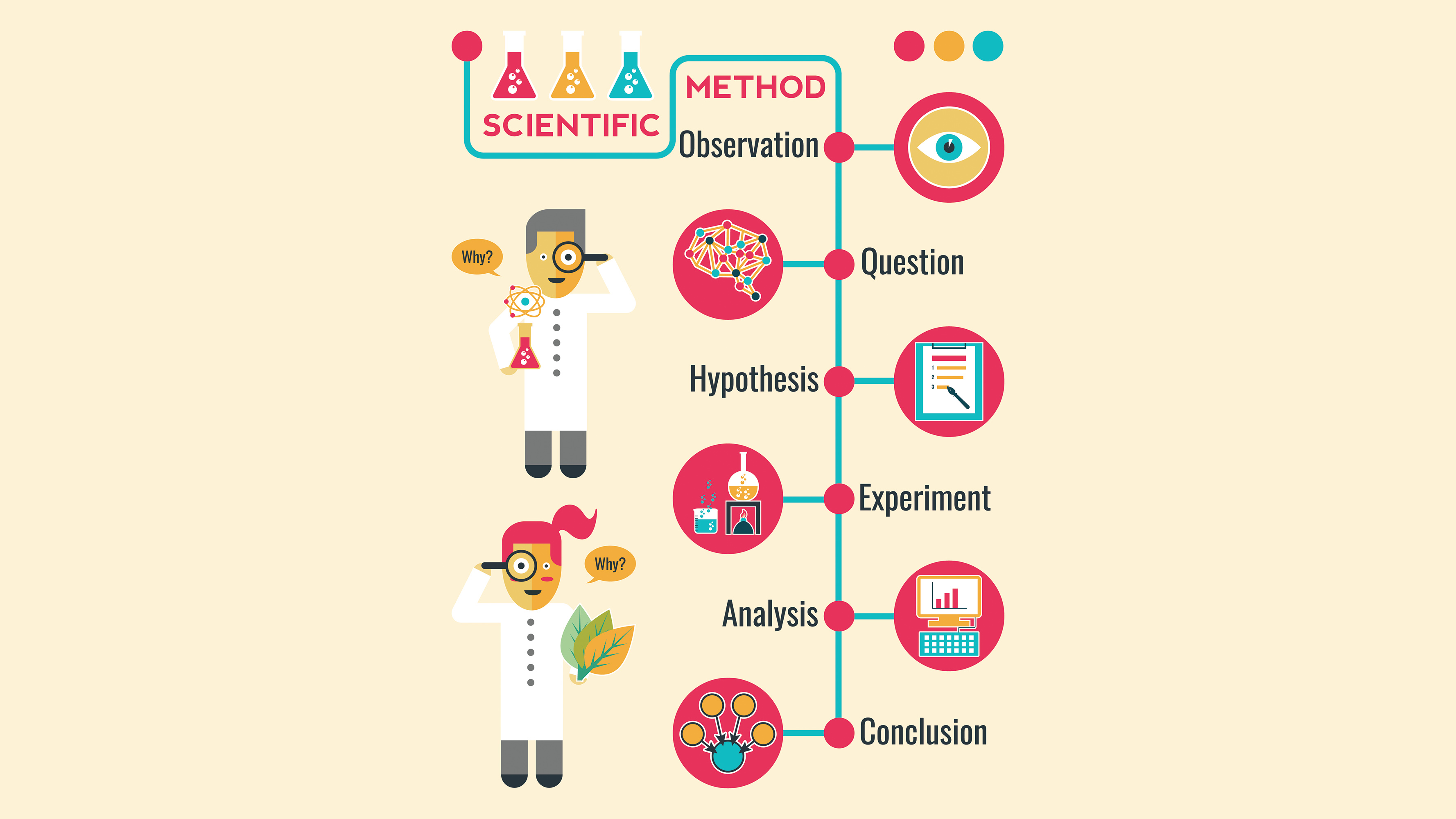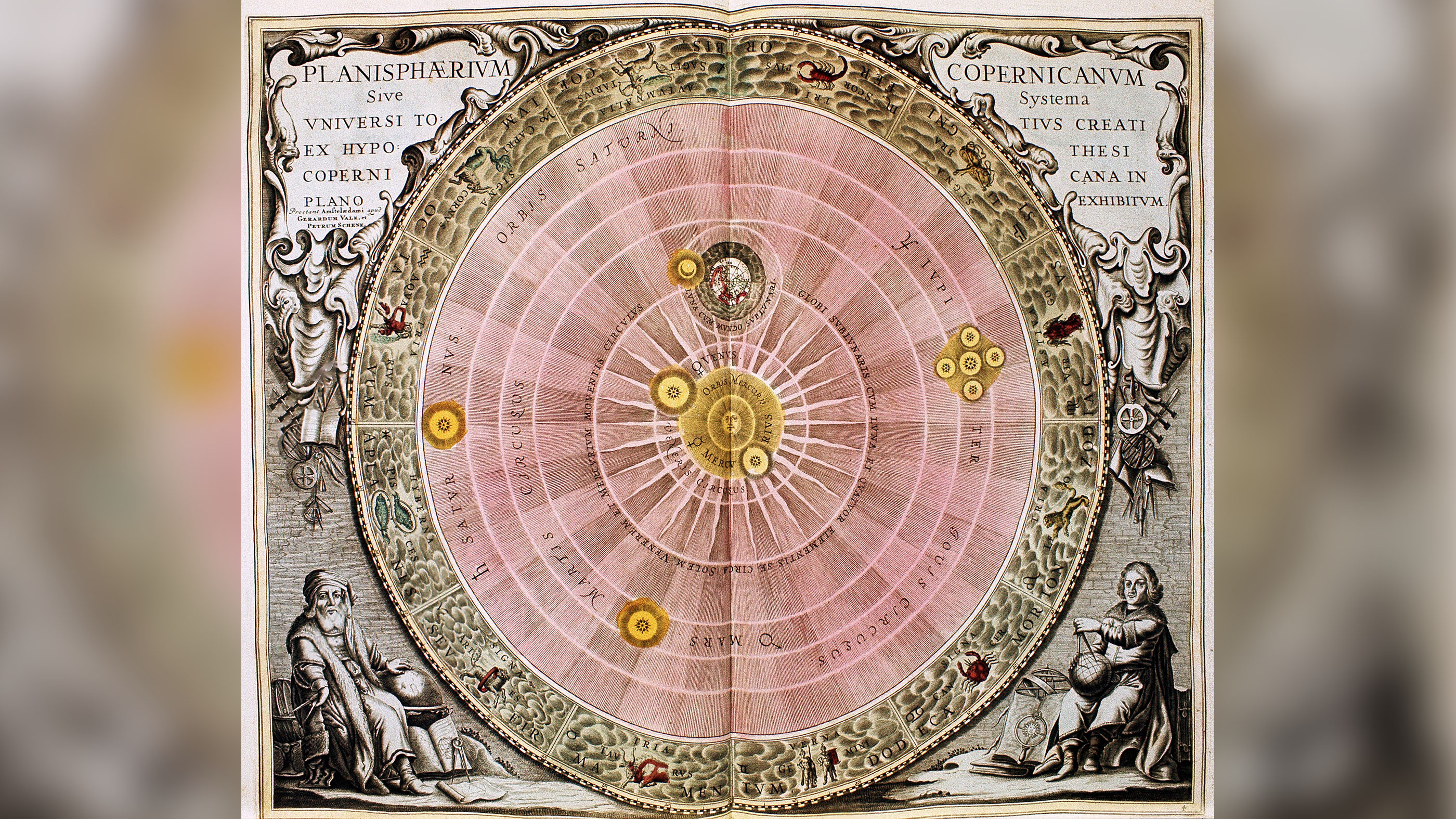Med School Question: What Scientific Journals Should I Read
Science and the scientific method: Definitions and examples

Science is a systematic and logical approach to discovering how things in the universe work. Information technology is as well the body of cognition accumulated through the discoveries about all the things in the universe.
The word "scientific discipline" is derived from the Latin give-and-take "scientia," which means knowledge based on demonstrable and reproducible data, according to the Merriam-Webster dictionary. True to this definition, science aims for measurable results through testing and assay, a process known equally the scientific method. Science is based on fact, non opinion or preferences. The process of science is designed to challenge ideas through research. One important aspect of the scientific process is that it focuses but on the natural world, according to the University of California, Berkeley. Anything that is considered supernatural, or beyond physical reality, does not fit into the definition of science.
The scientific method
When conducting enquiry, scientists use the scientific method to collect measurable, empirical evidence in an experiment related to a hypothesis (often in the form of an if/and then statement) that is designed to support or contradict a scientific theory.
"Every bit a field biologist, my favorite part of the scientific method is being in the field collecting the data," Jaime Tanner, a professor of biology at Marlboro Higher, told Live Science. "Merely what really makes that fun is knowing that you are trying to reply an interesting question. Then the first step in identifying questions and generating possible answers (hypotheses) is too very important and is a creative process. Then once you collect the information you analyze it to see if your hypothesis is supported or not."

The steps of the scientific method go something similar this, according to Highline College:
- Make an observation or observations.
- Course a hypothesis — a tentative clarification of what's been observed, and make predictions based on that hypothesis.
- Exam the hypothesis and predictions in an experiment that can exist reproduced.
- Analyze the data and draw conclusions; take or reject the hypothesis or modify the hypothesis if necessary.
- Reproduce the experiment until in that location are no discrepancies between observations and theory. "Replication of methods and results is my favorite step in the scientific method," Moshe Pritsker, a erstwhile post-doctoral researcher at Harvard Medical School and CEO of JoVE, told Live Science. "The reproducibility of published experiments is the foundation of science. No reproducibility — no science."
Some key underpinnings to the scientific method:
- The hypothesis must exist testable and falsifiable, co-ordinate to North Carolina State Academy. Falsifiable means that there must exist a possible negative reply to the hypothesis.
- Research must involve deductive reasoning and inductive reasoning. Deductive reasoning is the process of using true premises to reach a logical true conclusion while anterior reasoning uses observations to infer an explanation for those observations.
- An experiment should include a dependent variable (which does non change) and an independent variable (which does change), according to the University of California, Santa Barbara.
- An experiment should include an experimental group and a control group. The control group is what the experimental grouping is compared against, co-ordinate to Britannica.
Hypothesis, theory and police
The process of generating and testing a hypothesis forms the backbone of the scientific method. When an idea has been confirmed over many experiments, it tin can be called a scientific theory. While a theory provides an explanation for a phenomenon, a scientific law provides a description of a phenomenon, co-ordinate to The University of Waikato. One example would be the law of conservation of free energy, which is the get-go law of thermodynamics that says that energy can neither be created nor destroyed.
A law describes an observed phenomenon, just it doesn't explicate why the phenomenon exists or what causes it. "In scientific discipline, laws are a starting place," said Peter Coppinger, an acquaintance professor of biological science and biomedical engineering at the Rose-Hulman Institute of Technology. "From in that location, scientists can and then ask the questions, 'Why and how?'"
Laws are generally considered to be without exception, though some laws accept been modified over time later farther testing institute discrepancies. For instance, Newton'south laws of motion describe everything we've observed in the macroscopic world, merely they break down at the subatomic level.
This does not mean theories are not meaningful. For a hypothesis to become a theory, scientists must carry rigorous testing, typically across multiple disciplines by carve up groups of scientists. Proverb something is "just a theory" confuses the scientific definition of "theory" with the layperson's definition. To most people a theory is a hunch. In science, a theory is the framework for observations and facts, Tanner told Live Scientific discipline.
A cursory history of science

The primeval bear witness of science can be plant as far back equally records be. Early tablets incorporate numerals and information nearly the solar organisation, which were derived by using careful observation, prediction and testing of those predictions. Science became decidedly more "scientific" over time, however.
1200s: Robert Grosseteste adult the framework for the proper methods of modernistic scientific experimentation, co-ordinate to the Stanford Encyclopedia of Philosophy. His works included the principle that an research must be based on measurable evidence that is confirmed through testing.
1400s: Leonardo da Vinci began his notebooks in pursuit of evidence that the human body is microcosmic. The artist, scientist and mathematician likewise gathered information about optics and hydrodynamics.
1500s: Nicolaus Copernicus avant-garde the understanding of the solar system with his discovery of heliocentrism. This is a model in which World and the other planets circumduct around the sun, which is the heart of the solar system.
1600s: Johannes Kepler built upon those observations with his laws of planetary motion. Galileo Galilei improved on a new invention, the telescope, and used it to report the sun and planets. The 1600s also saw advancements in the study of physics every bit Isaac Newton developed his laws of motion.
1700s: Benjamin Franklin discovered that lightning is electric. He also contributed to the written report of oceanography and meteorology. The understanding of chemical science also evolved during this century equally Antoine Lavoisier, dubbed the begetter of modern chemistry, developed the law of conservation of mass.
1800s: Milestones included Alessandro Volta's discoveries regarding electrochemical series, which led to the invention of the battery. John Dalton also introduced atomic theory, which stated that all matter is composed of atoms that combine to grade molecules. The basis of modern study of genetics advanced as Gregor Mendel unveiled his laws of inheritance. Later in the century, Wilhelm Conrad Röntgen discovered 10-rays, while George Ohm'south law provided the footing for understanding how to harness electrical charges.
1900s: The discoveries of Albert Einstein, who is best known for his theory of relativity, dominated the beginning of the 20th century. Einstein's theory of relativity is actually 2 dissever theories. His special theory of relativity, which he outlined in a 1905 newspaper, "The Electrodynamics of Moving Bodies," concluded that time must change according to the speed of a moving object relative to the frame of reference of an observer. His second theory of general relativity, which he published equally "The Foundation of the General Theory of Relativity," avant-garde the thought that matter causes space to bend.
In 1952, Jonas Salk developed the polio vaccine, which reduced the incidence of polio in the Us past virtually 90%, according to Britannica. The following year, James D. Watson and Francis Crick discovered the construction of DNA, which is a double helix formed by base of operations pairs attached to a sugar-phosphate backbone, according to the National Man Genome Inquiry Plant.
2000s: The 21st century saw the first typhoon of the human genome completed, leading to a greater understanding of Deoxyribonucleic acid. This advanced the study of genetics, its role in human biology and its utilise equally a predictor of diseases and other disorders, according to the National Human Genome Research Institute.
Additional resources
- This video from City University of New York delves into the basics of what defines science.
- Learn about what makes scientific discipline science in this volume excerpt from Washington State Academy.
- This resource from the University of Michigan — Flintstone explains how to pattern your ain scientific study.
Bibliography
Merriam-Webster Lexicon, Scientia. 2022. https://world wide web.merriam-webster.com/dictionary/scientia
University of California, Berkeley, "Agreement Scientific discipline: An Overview." 2022. https://undsci.berkeley.edu/article/0_0_0/intro_01
Highline Higher, "Scientific method." July 12, 2015. https://people.highline.edu/iglozman/classes/astronotes/scimeth.htm
Northward Carolina State University, "Science Scripts." https://projects.ncsu.edu/projection/bio183de/Black/science/science_scripts.html
Academy of California, Santa Barbara. "What is an Independent variable?" October 31,2017. http://scienceline.ucsb.edu/getkey.php?central=6045
Encyclopedia Britannica, "Command group." May 14, 2020. https://world wide web.britannica.com/science/control-group
The Academy of Waikato, "Scientific Hypothesis, Theories and Laws." https://sci.waikato.ac.nz/evolution/Theories.shtml
Stanford Encyclopedia of Philosophy, Robert Grosseteste. May 3, 2019. https://plato.stanford.edu/entries/grosseteste/
Encyclopedia Britannica, "Jonas Salk." October 21, 2021. https://www.britannica.com/biography/Jonas-Salk
National Human being Genome Inquiry Institute, "Phosphate Backbone." https://www.genome.gov/genetics-glossary/Phosphate-Backbone
National Human Genome Enquiry Institute, "What is the Human Genome Project?" https://www.genome.gov/human-genome-project/What
Live Scientific discipline correspondent Ashley Hamer updated this article on January. 16, 2022.
burkettselmerry1953.blogspot.com
Source: https://www.livescience.com/20896-science-scientific-method.html
0 Response to "Med School Question: What Scientific Journals Should I Read"
Post a Comment